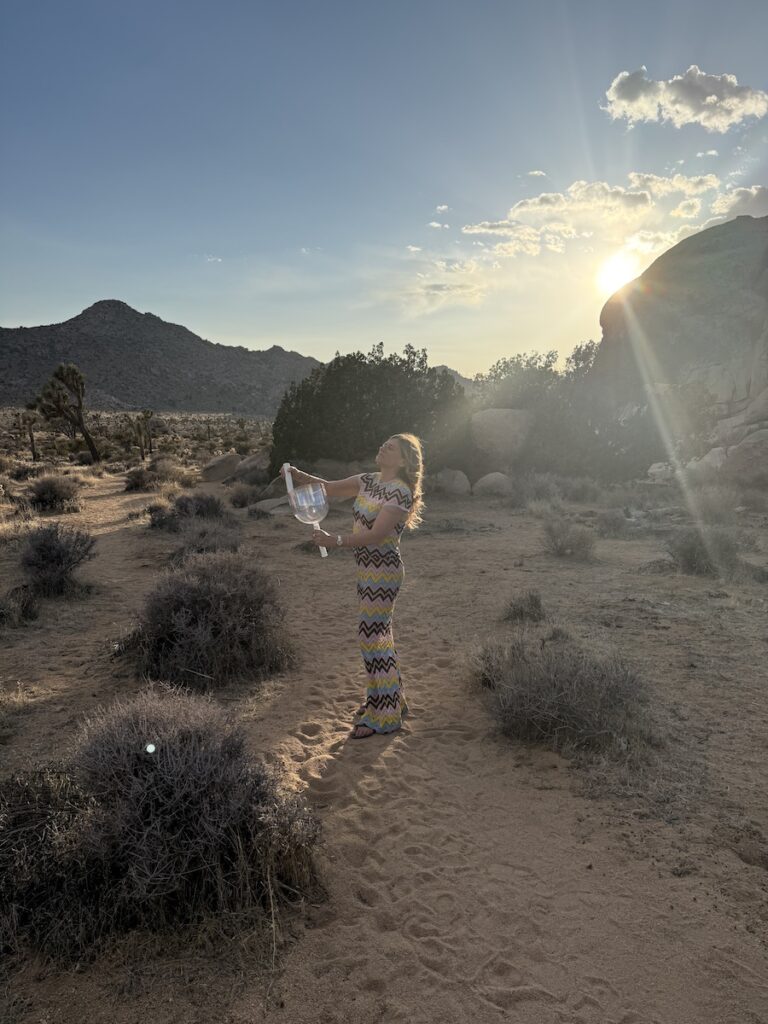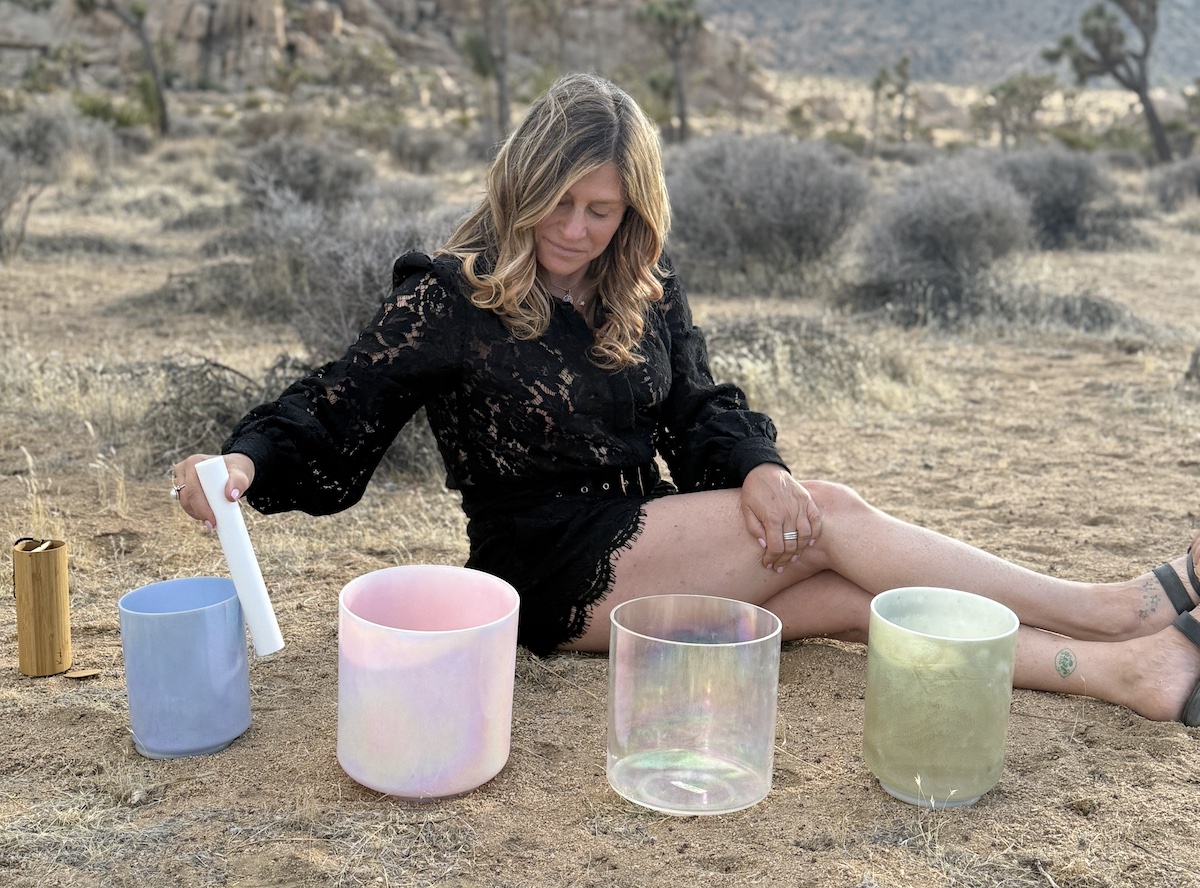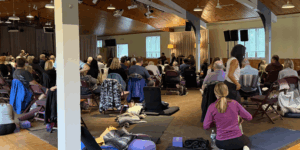On May 1st, I arrived at Joshua Tree for a four-day retreat run by Susy Markoe Schieffelin of The Sound Healer’s Academy (TSHA). It was two months since I left for the spiritual pilgrimage to India and one month to the day when April 1st was ushered in with sadness and disappointment from a person who was dear to me. I was a bit apprehensive about doing a retreat with six women who I never met before, but my intuition told me this was exactly where I needed to be, and that Susy of The Copper Vessel would create an environment and space for me to feel seen, heard, and cared for.
The first evening, we gathered for the opening ceremony where introductions were made and intentions were set, followed by a beautiful sound bath. Everyone was either an alumnus of THSA or a mentor. In fact, I was fortunate to have Stephanie Weber who was assisting Susy on the retreat. She was my TSHA group’s mentor from the program I graduated from in 2023, and we had only met on zoom! For the next four days, we did daily practices, kundalini yoga, sound baths, journaling and sharing, and enjoyed delicious, healthy meals daily together at the lovely home in the desert that we all shared. We took hikes at Joshua Tree, visited the Giant Rock, had a private sound bath session at the Integratron, and relaxed in the Hot Springs. It was more than just a retreat, we shared personal stories, as well as our business practices – we were sounding boards to each other.
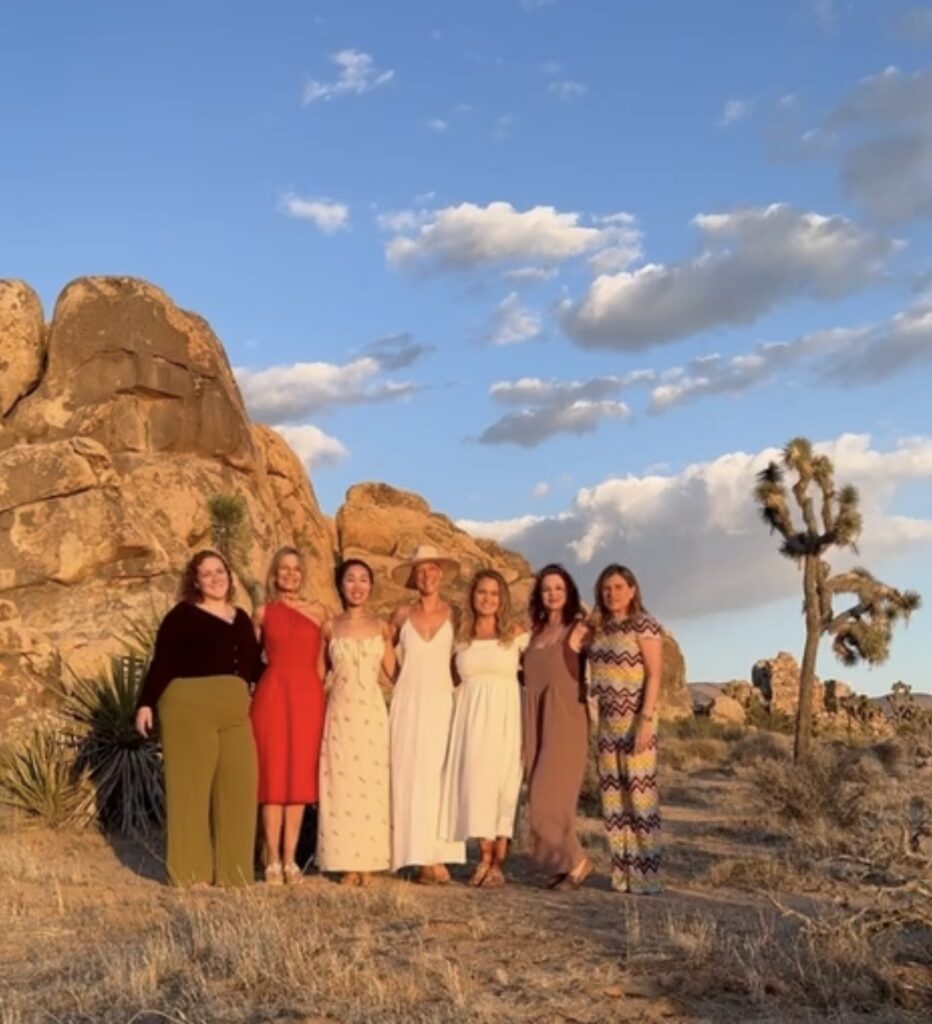
When we departed, we established a 40-day post retreat integration practice, and made what I know were meaningful relationships which will continue long after we said our goodbyes. Here are some of the highlights.
JOSHUA TREE NATIONAL PARK
Two distinct desert ecosystems, the Mojave and the Colorado, come together in Joshua Tree National Park. A fascinating variety of plants and animals make their homes in a land sculpted by strong winds and occasional torrents of rain. Dark night skies, a rich cultural history, and surreal geologic features add to the wonder of this vast wilderness in southern California.
The Joshua tree is a keystone species in the Mojave Desert, providing habitat and resources for various desert animals. Named by Mormon settlers who saw its branches as resembling the biblical figure Joshua raising his arms up to the sky in prayer, the tree’s unique shape and resilience in harsh conditions also contribute to its cultural significance.
The Joshua Tree Isn’t Really a Tree
Even though it looks like a tree (sort of), The Joshua Tree is actually a species of the yucca plant, which is in the same subgroup as orchids and flowering grasses. They grow very slowly, just 1 – 3 inches per year, which gives them an average life span of 150 years. Joshua Trees became the first plant to be protected under California’s Endangered Species Act in 2020 due to the threat of climate change.
A home for wildlife, the Joshua tree isn’t just a symbol of the desert; it’s an essential part of the Mojave Desert ecosystem. Its branches and trunk provide shelter and nesting sites for many desert creatures.
Healing Powers of Joshua Tree National Park
Energetic Vortexes
Many believe Joshua Tree sits on or near powerful earth energy vortexes – places where spiritual and healing energy is intensified. These vortexes are said to:
- Promote emotional release
- Heighten intuition
- Aid in spiritual transformation
Desert Silence & Solitude
The vast, quiet landscape allows for deep introspection and reconnection. This kind of silence can help:
- Calm the nervous system
- Encourage mindfulness
- Support grief, recovery, or transitions
Nature as Medicine
Being among the unique Joshua Trees, rock formations, and expansive sky can feel sacred. Benefits include:
- A sense of awe (which helps reduce anxiety)
- Clarity of thought
- Creative inspiration and emotional grounding
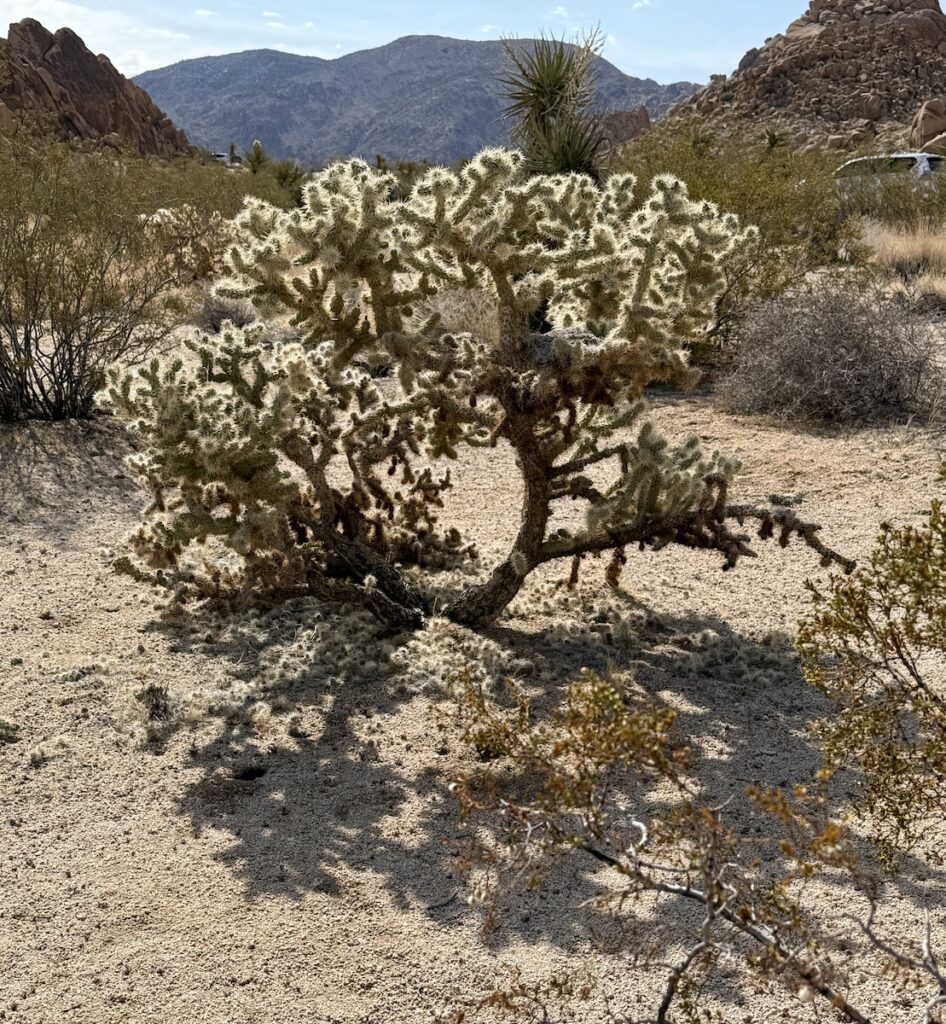
GIANT ROCK
Giant Rock is a large freestanding boulder in the Mojave Desert near Joshua Tree, California. Covering nearly 5,800 square-feet of ground and seven stories high, it is purported to be the largest free-standing boulder in the world.
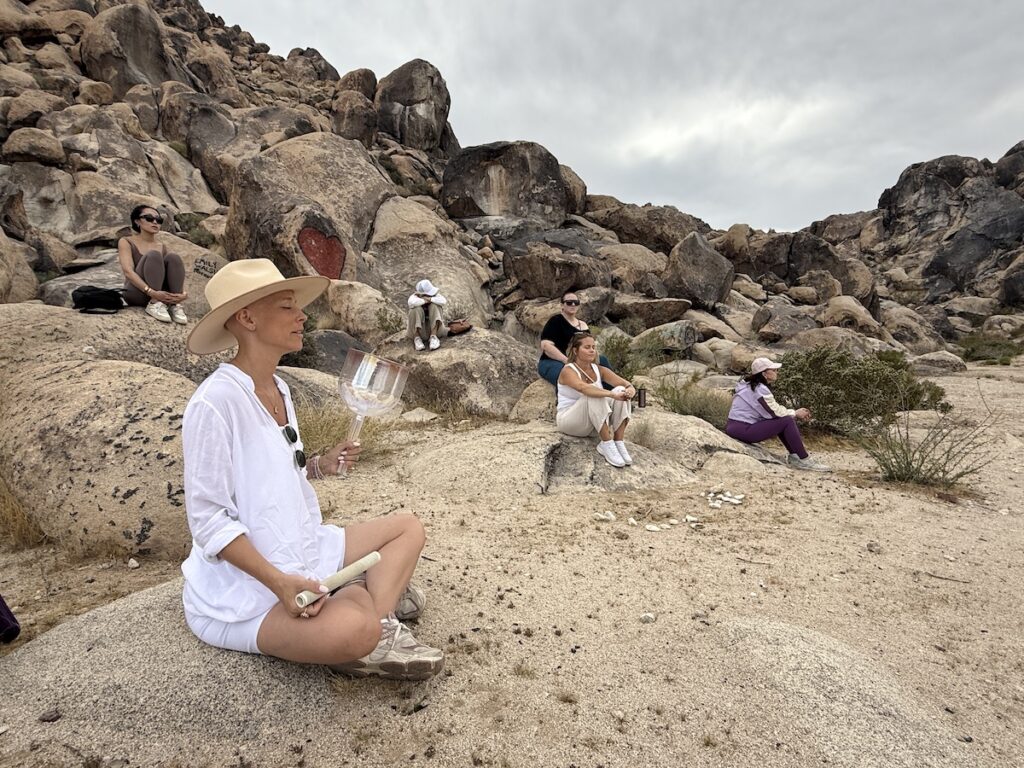
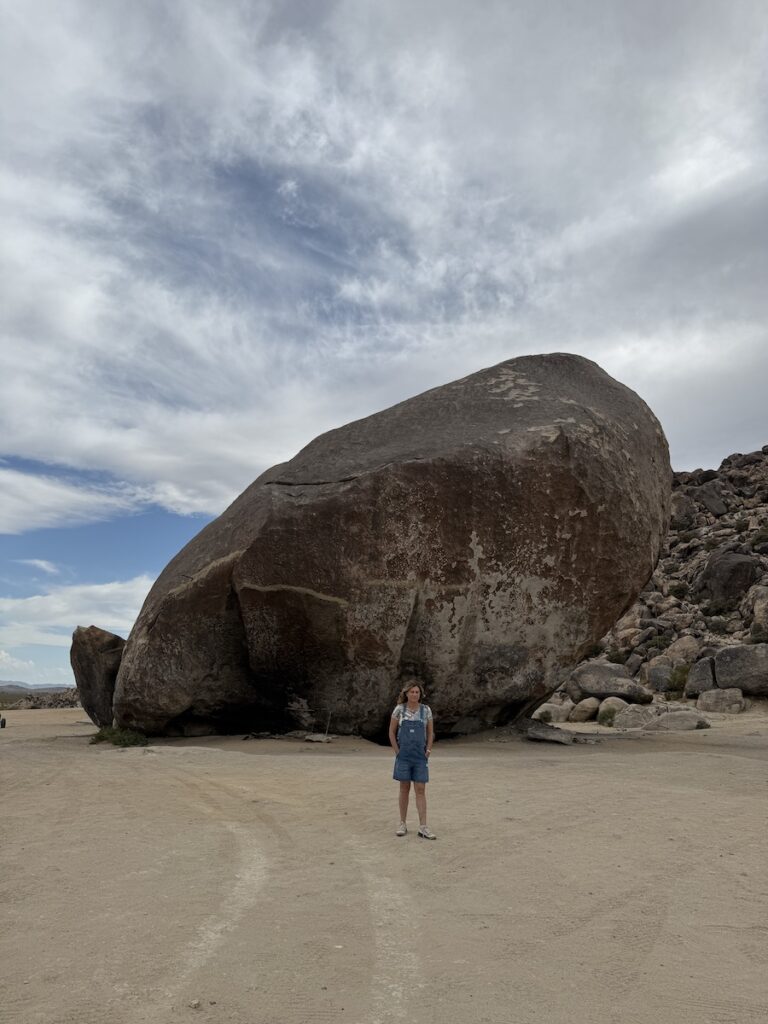
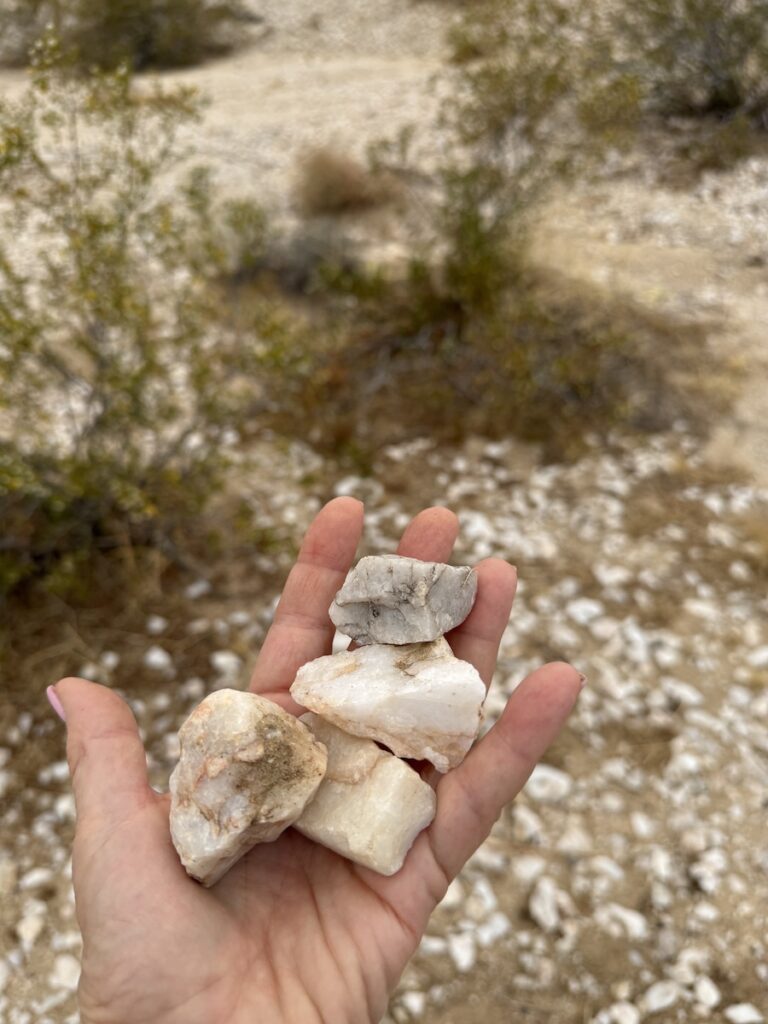
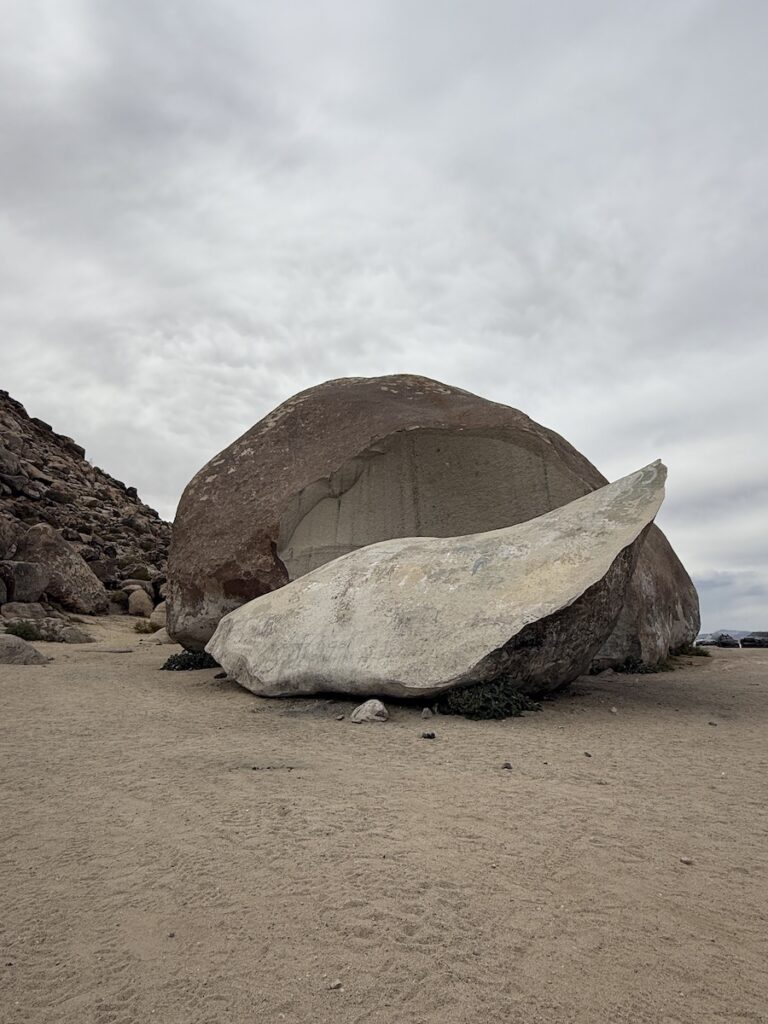
According to locals, Giant Rock and its grounds were held sacred by Native Americans for hundreds to thousands of years prior to colonization. The story has it that Shamans would go there to draw spiritual strength and energies from the rock; however, it wasn’t until the 1930s that the spot gained buzz from the modern community. While there, we “shopped for crystals” that were strewn on the ground in this indigenous area. Susy did a sound bath for the group in the jaw-dropping spiritual space.
INTEGRATRON
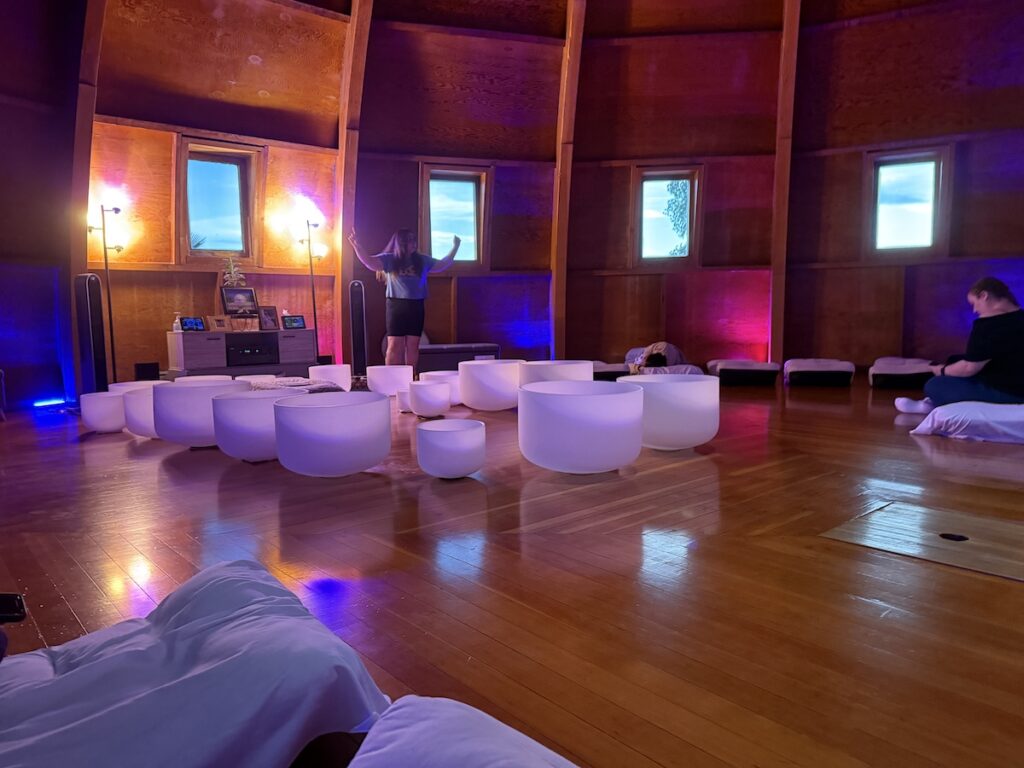
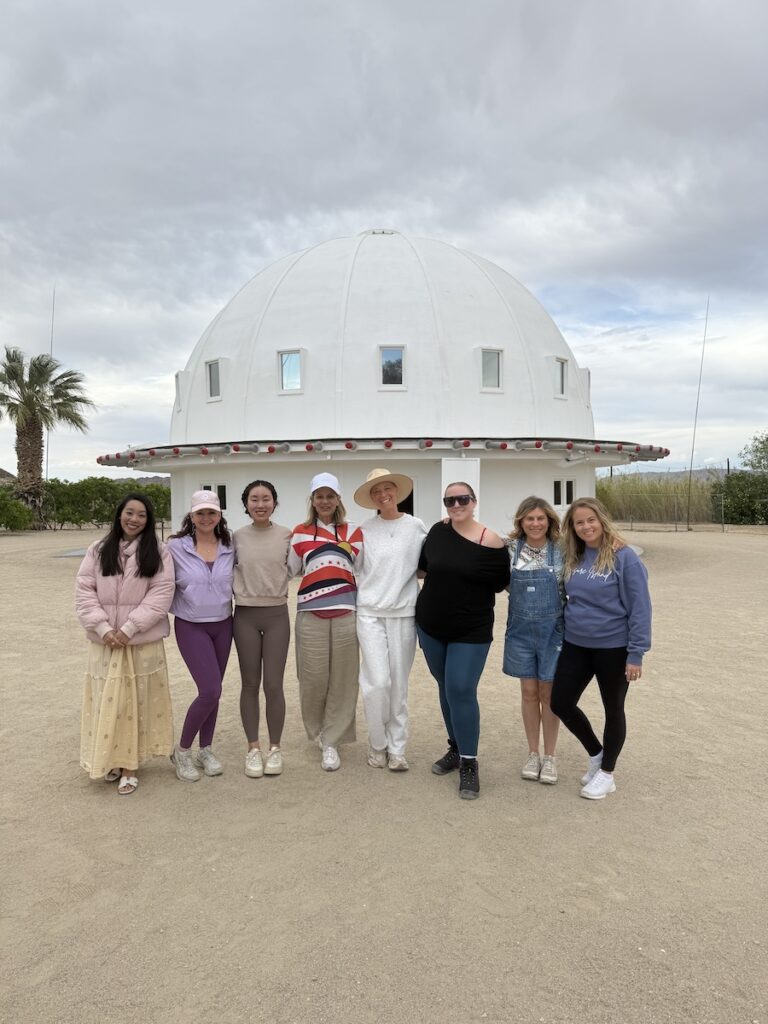
The Integratron is a 38 feet (12 m) tall cupola structure with a diameter of 55 feet (17 m) designed by ufologist and contactee George Van Tassel. Van Tassel claimed the Integratron was capable of rejuvenation, anti-gravity, and time travel. He built the structure in Landers, California (near Joshua Tree) following instructions that Van Tassel vehemently claimed were provided directly to him by visitors from the planet Venus. The Integratron machine was started in 1957, the structure erected in 1959. It was financed predominantly by donations, including funds from Howard Hughes. After Van Tassel’s death in 1978, the building had a series of owners (and was left in various states of disrepair) before sisters Joanne, Nancy, and Patty Karl bought it in the early 2000s. The sisters promote the Integratron as an “acoustically perfect structure” and offer “sound baths” that they describe as “…meditation-like sessions accompanied by tones from 22 quartz crystal bowls, creating binaural beats for relaxation and rejuvenation”. The building is now a part of the National Historic Register and continues to be stewarded by the Karl sisters and their adult children.
HOT SPRINGS—Wonder Valley
On our last full day, we went to Wonder Valley Hot Springs. What a way to further enhance ourselves — mind, body, and spirit!
Hot springs offer a variety of unique aspects that set them apart from a hot tub or warm bath. They provide an opportunity to relax and rejuvenate outdoors in a peaceful, natural setting. The water flowing into the hot spring is also rich with minerals like boron, calcium, potassium, iron, and magnesium that carry a variety of health benefits such as boosting blood circulation, aiding in natural pain reduction, improving skin irritations, reducing stress levels, and detoxifying naturally.
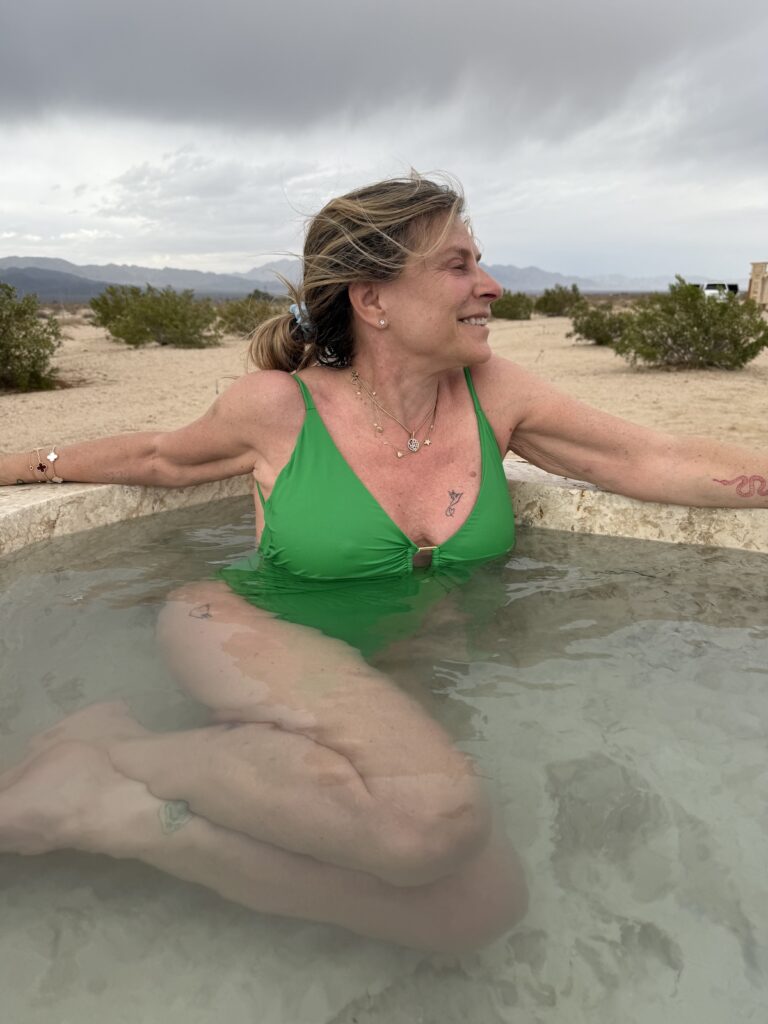
AN INCREDIBLE EXPERIENCE
What a different retreat this was from the one in March to India – and what a way to welcome in a new month. My personal, spiritual, and professional growth was profound. When I returned in April from my India trip, I experienced turmoil and dysregulation in my personal life. Luckily, I had the skills to heaI – I leaned into healing modalities, deepened my personal mediation practice, incorporated my new Tibetan bowls into my daily meditations, and received a reiki cord-cutting session with my Reiki teacher, Nicole Rutsch. The personal growth was enormous and was further sealed at the Joshua Tree retreat. I emerged renewed.
Some valuable lessons from my recent journeys:
- Pain is the touchstone of growth
- Pain is inevitable, but suffering is optional
- Your enemies are your best teachers
- The Buddhist concept of impermanence, and my personal resilience to persevere in difficult emotional turbulence
Impermanence – all things, including physical and mental phenomena, are constantly changing and dissolving. Mindfulness Meditation Practitioners have always understood impermanence as the cornerstone of Buddhist teachings and practice. All that exists is impermanent; nothing lasts. Therefore, nothing can be grasped or held onto. When we don’t fully appreciate this simple but profound truth we suffer, as did the monks who descended into misery and despair at the Buddha’s passing.
More about impermanence–
- Three Marks of Existence: Impermanence is one of the three core characteristics (marks) of existence in Buddhism, alongside suffering (dukkha) and the absence of self (anatta).
- Foundation of Buddhist Teachings: The understanding of impermanence forms the foundation of Buddhist teachings and the path towards enlightenment.
- Attachment and Suffering: Buddhism teaches that our suffering often arises from clinging to impermanent things and the idea of permanence, which doesn’t exist.
- Change and Transformation: While impermanence can seem daunting, it also signifies the potential for change, transformation, and new beginnings.
- Acceptance and Letting Go: Embracing impermanence involves accepting the transient nature of life and learning to let go of attachments, which can lead to greater peace and equanimity.
- Mindfulness and Meditation: Practices help cultivate mindfulness, allowing practitioners to observe the ever-changing nature of experience and develop a more balanced perspective.
The Joshua Tree retreat was such a wonderful experience, especially in contrast to the one in India. That is a part of life – not everything is peaches and cream! And when I experience joy, hold on to it – savor it! I was able to practice self- healing, giving and receiving holistic practices, and made lifelong friendships with my peers. And as a result, I will be a better healer for my clients, family and friends. Live it to give it!
